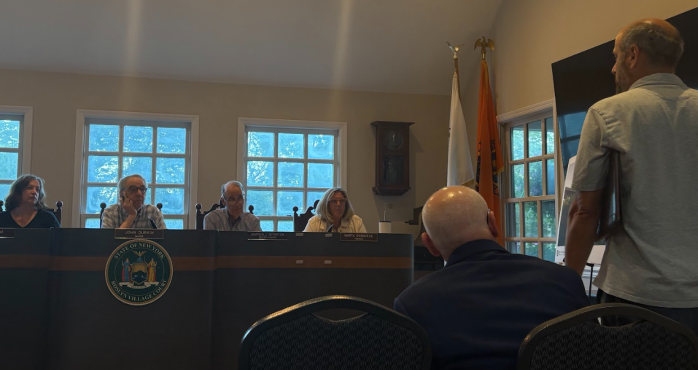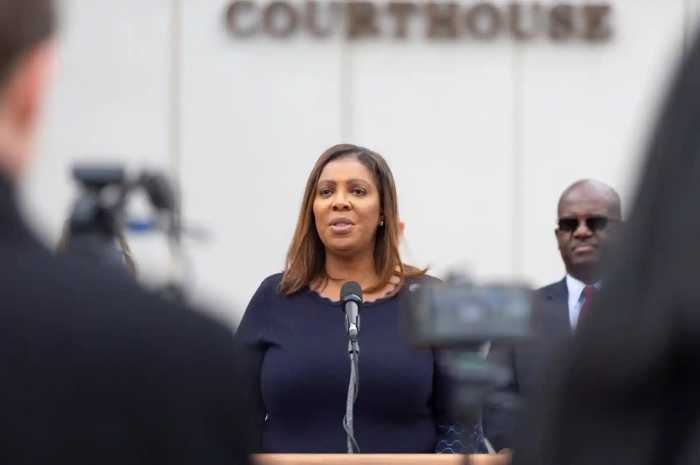
Countdown
On Aug. 1, the voters will decide the fate of the new coliseum and baseball park. The referendum itself—which carries a projected price tag of up to $2.2 million just to hold—has been subject to scrutiny as to the legality of the process and Wang’s assertion that the Islanders will cover the cost of the vote in the event the outcome is favorable to the Islanders. The Aug. 1 deadline has officials inside the county furiously issuing departmental memoranda and budget reports in an attempt to gauge the true financial impact of the bond on the county’s finances. The reports largely paint a picture of confusion stemming from incomplete information regarding the lease agreement, what payment guarantees might look like, historic figures versus projected revenues, the accuracy of the Camoin report and the total cost of the project to individual households.
The Nassau County Office of Legislative Budget Review (OLBR) prepared an analysis of the deal that tempers the enthusiastic findings of the Camoin report. Because Camoin utilized revenue projections supplied only by the Islanders, the outcome is understandably positive, though even Camoin tempered the projections by a substantive amount. The Islanders’ projections taken at face value would theoretically produce a profitable scenario to the taxpayers where the $25.6 million cost of servicing the bond indebtedness would be exceeded handsomely by anticipated revenues of $33.5 million annually to the county thereby covering 130 percent of the cost of the bond. Camoin took steps to reduce the revenue expectations (which included an assumption that the Islanders would make the playoffs every year of the lease once taking the ice in a new arena) and estimated the anticipated revenues would cover only 89.66 percent of the bond. The OLBR points out, however, that even Camoin’s more measured approach “reveals that Islanders’ projected annual attendance represents a 72.6% increase from the historical average.” Therefore, the OLBR further discounted the revenue assumptions and recommended to the Nassau County Legislature that the actual figure will be closer to 73.79 percent, which translates to a deficit of $6.7 million annually, or $13.80 per household.
There’s a big stipulation with this figure, though, which somehow does not get mentioned in proponents’ sound bites: $13.80 per household if all revenues go toward the Coliseum bond’s annual debt service maintenance—which Team Mangano has not guaranteed it would.
“The revenues will go into the general fund and be used for tax relief and to pay off the County’s highest debt rates,” Mangano’s Senior Policy Advisor Brian Nevin tells the Press.
The referendum is only the first step in a long procedural battle to make the new coliseum a reality. Regardless of the referendum’s outcome, the Nassau County Legislature must decide whether or not to approve the bond measure, which only moves the process down the line to the ultimate arbiter of this deal: NIFA.
Members have already expressed displeasure at the thought of a publicly financed arena. The watchdog’s chair Ronald Stack said at a July 14 board meeting that since NIFA is a public entity, it refrained from taking a stance on the Aug. 1 referendum, which must be approved by the voters and two-thirds of the county Legislature to be enacted.
NIFA offered two recommendations if the referendum were passed, however. First, the board would review the context of the situation, asking if the project would be an appropriate endeavor given a projected $225 million deficit—the real focus of that day’s board meeting, along with what Stack described as the Mangano administration’s doing “nothing” since filing a June 24 Multi-Year Financial Plan Update (which NIFA blasted) to address a widening budget gap. Second, NIFA would analyze the terms of the business deal and discuss if the projections are realistic.
In a fact sheet detailing the financial factors related to the redevelopment of the Hub, NIFA soberly stated that the Coliseum project will be financed through a property tax increase of a 30-year, 3.5 to 4 percent, regardless of generated revenues.
Board member George Marlin, the outspoken conservative member of the authority, says he is gravely disappointed in the county’s fiscal and managerial behavior, saying that the county has exhibited “delusions of fiscal balance.”
“My response to NIFA is: We’re open to the suggestions from them,” says Mangano. “Criticisms have been plentiful—that’s it, they’ve just been critics—what’s their suggestion?! We began 2010 with a deficit, we ended it with a surplus.
“To be honest with you, I really don’t want to get into a pissing match with them,” he adds. “It’s just that they have clearly just been critics and not helping the situation at all. But, we continue to manage, and part of this [Coliseum deal] creates a new revenue source.”



































